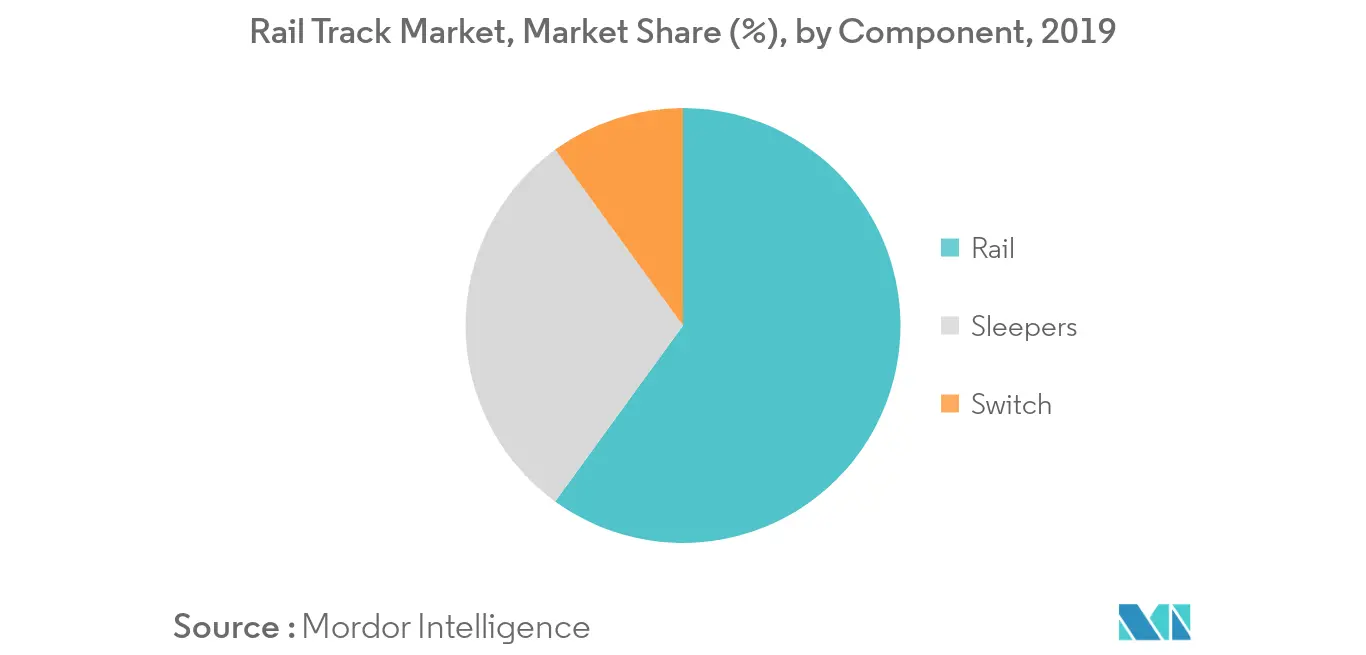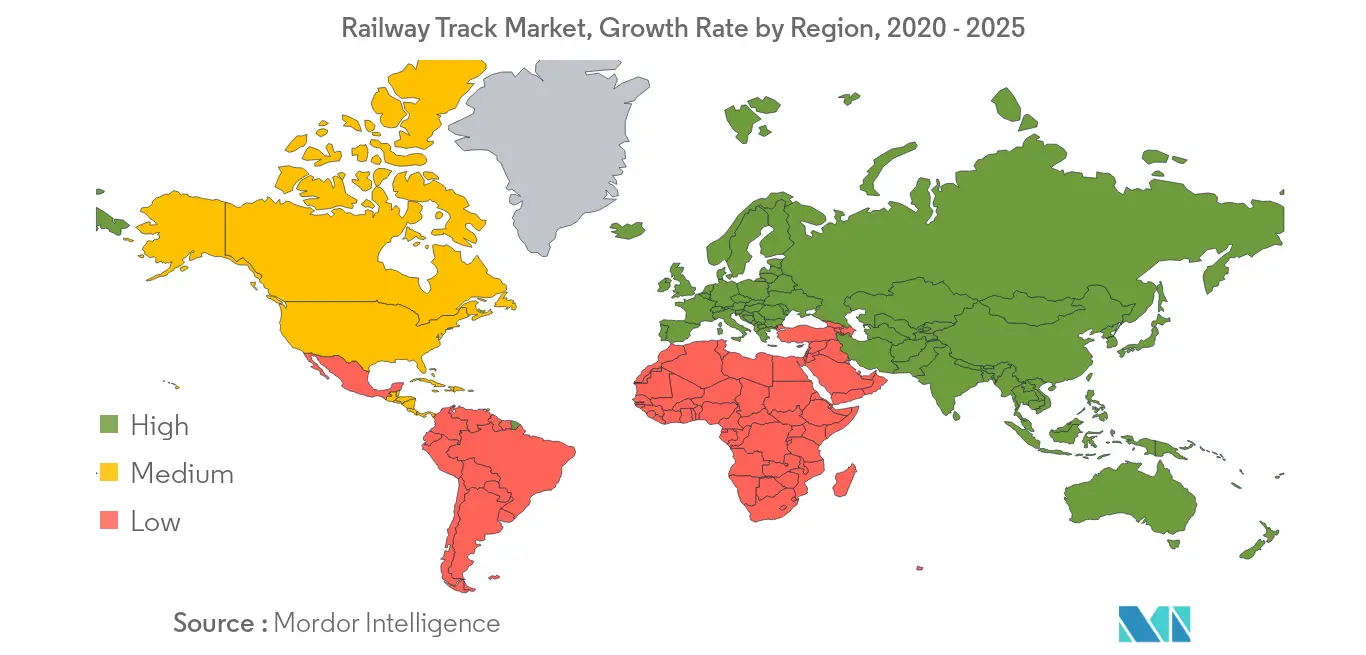Market Trends of Railway Track Industry
This section covers the major market trends shaping the Railway Track Market according to our research experts:
Expansions of Rail Network Driving the Railway Track Market
The expansion and electrification activities of the major rail networks are being carried out across the world, to promote the most eco-friendly means of transport. In most of the biggest rail network countries, management is under the control of private players. However, at the same time, governments have some control over the rail network operations. For instance,
- In 2019, the Transport Ministry of Germany announced its plans to invest around USD 69 billion in the up-gradation of railway networks over the next 10 years, with approximately USD 26 billion to be contributed by Deutsche Bahn. About 33,000 km of the railway network of Germany has dilapidated bridges and overused train tracks.
- In 2017 the UK government announced that to invest around USD 50 billion in the modernization of rail network from 2019 to 2024. In January 2020, the UK government planned to invest around USD 550 million for the restoration of the previously closed rail lines to boost the connectivity within the country.

Asia-Pacific Is Expected to Lead the Railway Track Market
The Asian economies, such as China, India, and Japan, top the list of passenger-kilometer per year. In addition, major manufacturers of the railway track market are headquartered in this region. Local governments are putting more and more capital for advancing the present rail network. For instance,
- In 2018, China invested USD 117.12 billion in fixed rail assets.
- India, which has the fourth-largest rail network in the world, has a state-owned rail network. In 2019, the Indian government's PSU Ircon International Limited signed a USD 91.26 million contract agreement with the Sri Lankan government, for the up-gradation of old tracks of around 130 km between Colombo and Tamil Nadu. Till now, India has provided around USD 1.3 billion Line of Credit for the development of the railways in Sri Lanka. Furthermore, the Indian railway is replacing the traditional steel tracks to zinc-coated tracks where the chances of corrosion are high.


